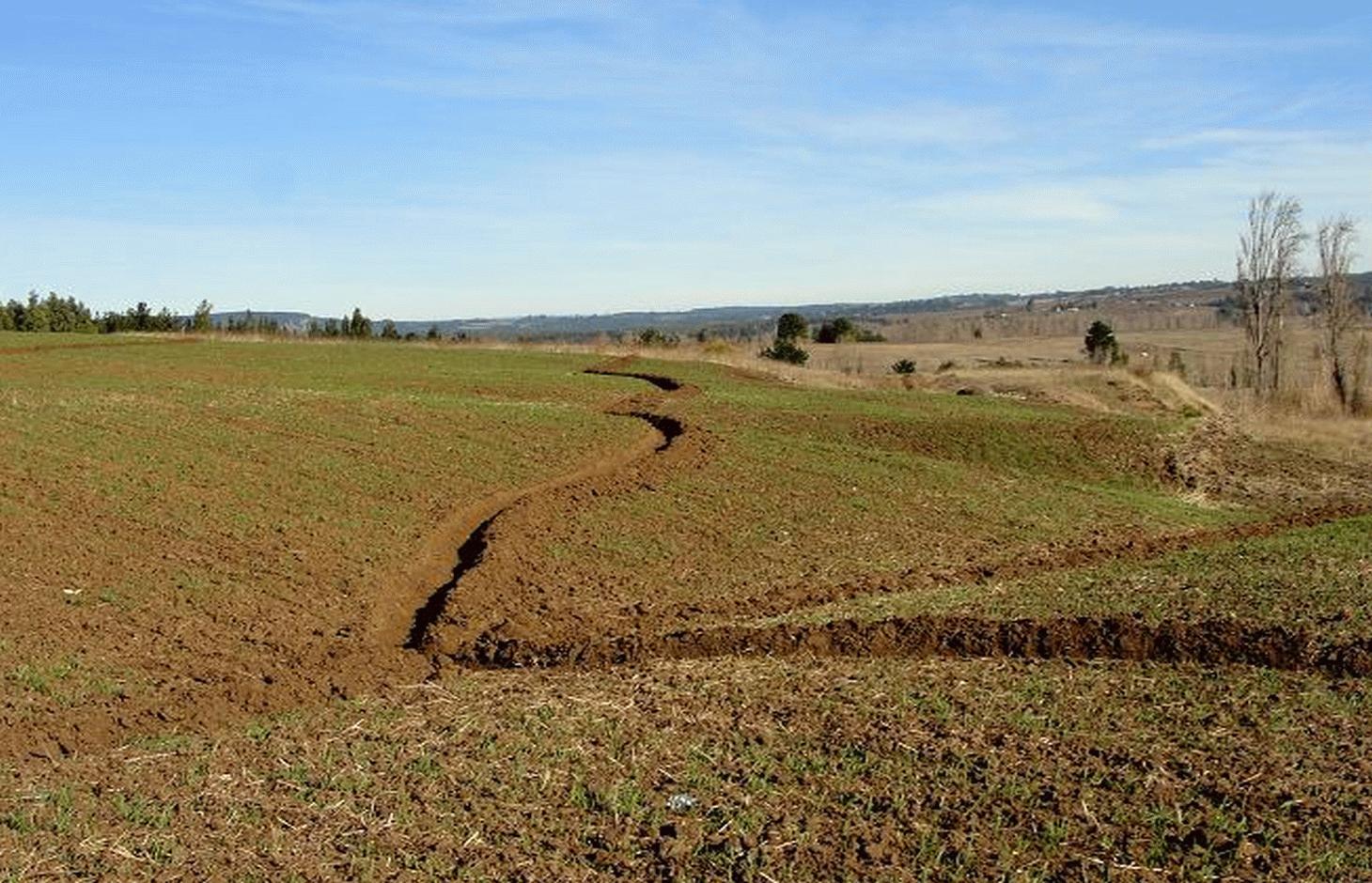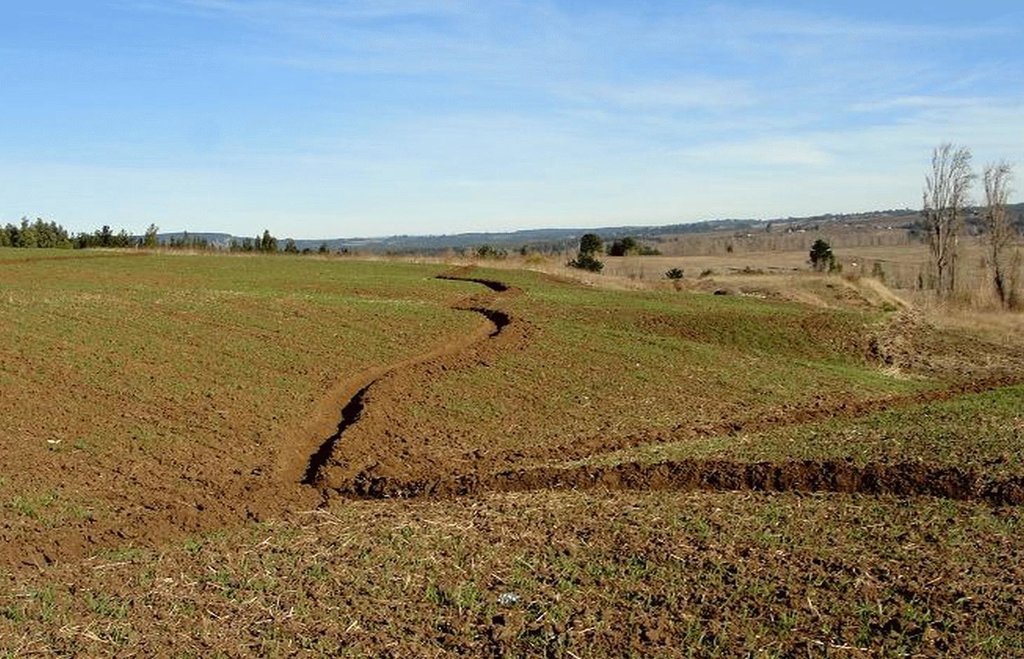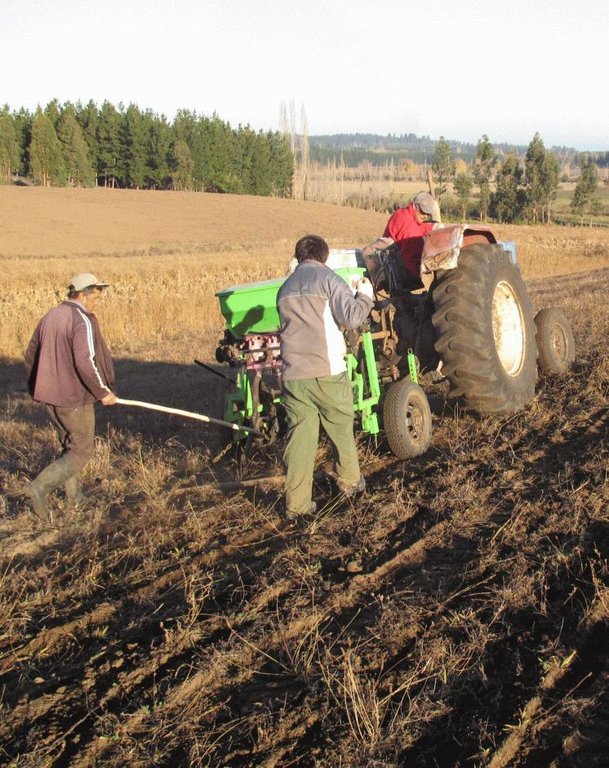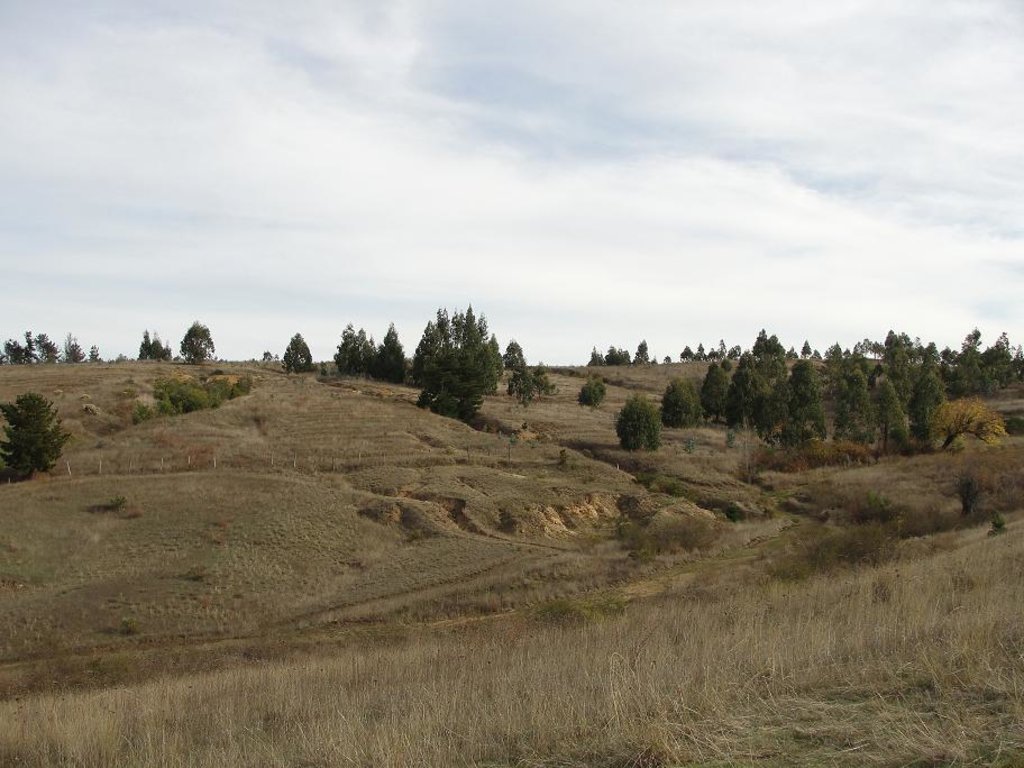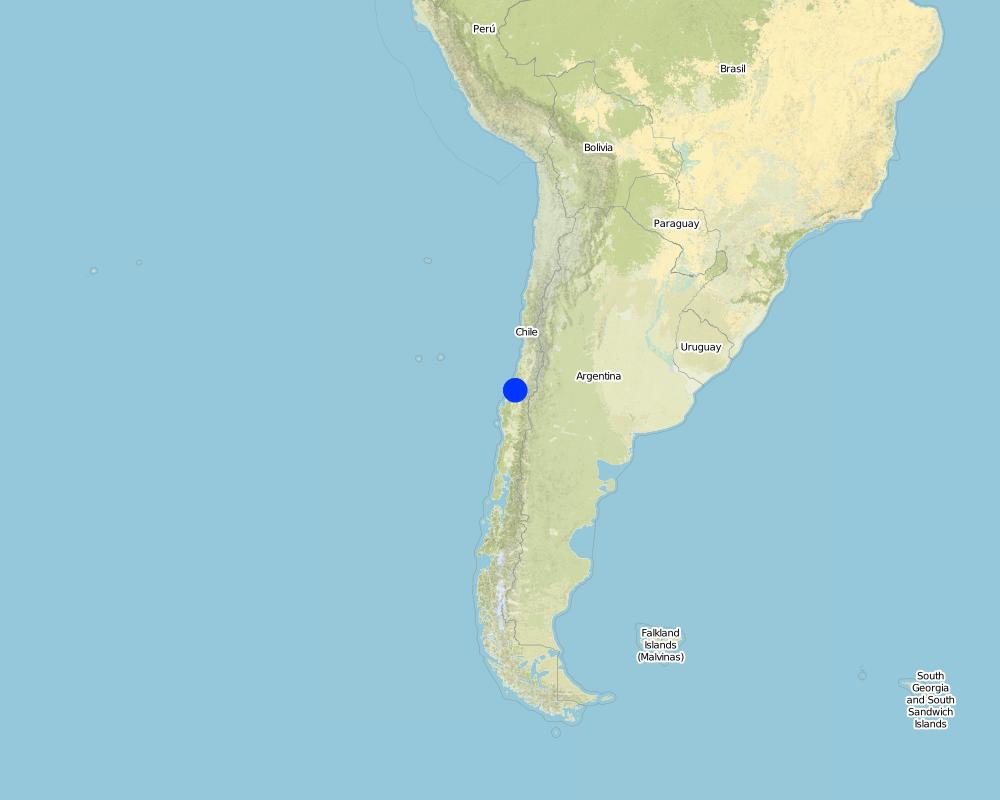Dissemination of soil conservation technologies in dryland areas [ប្រទេសស៊ីលី]
- ការបង្កើត៖
- បច្ចុប្បន្នភាព
- អ្នកចងក្រង៖ Carlos Ovalle
- អ្នកកែសម្រួល៖ –
- អ្នកត្រួតពិនិត្យច្រើនទៀត៖ Fabian Ottiger, Deborah Niggli
Cero labranza con subsolado (Spanish)
approaches_2577 - ប្រទេសស៊ីលី
ពិនិត្យមើលគ្រប់ផ្នែក
ពង្រីកមើលទាំងអស់ បង្រួមទាំងអស់1. ព័ត៌មានទូទៅ
1.2 ព័ត៌មានលម្អិតពីបុគ្គលសំខាន់ៗ និងស្ថាប័នដែលចូលរួមក្នុងការវាយតម្លៃ និងចងក្រងឯកសារនៃវិធីសាស្ត្រផ្សព្វផ្សាយ
ឈ្មោះគម្រោងដែលបានចងក្រងឯកសារ/ វាយតម្លៃលើវិធីសាស្ត្រផ្សព្វផ្សាយ (បើទាក់ទង)
DESIRE (EU-DES!RE)ឈ្មោះអង្គភាពមួយ (ច្រើន) ដែលបានចងក្រងឯកសារ/ វាយតម្លៃលើវិធីសាស្ត្រផ្សព្វផ្សាយ (បើទាក់ទង)
Instituto de Investigaciones Agropecuarias (INIA) (Instituto de Investigaciones Agropecuarias (INIA)) - ប្រទេសស៊ីលី1.3 លក្ខខណ្ឌទាក់ទងទៅនឹងការប្រើប្រាស់ទិន្នន័យដែលបានចងក្រងតាមរយៈវ៉ូខេត
តើពេលណាដែលទិន្នន័យបានចងក្រង (នៅទីវាល)?
11/05/2011
អ្នកចងក្រង និង(បុគ្គលសំខាន់ៗ)យល់ព្រមទទួលយកនូវលក្ខខណ្ឌនានាទាក់ទងទៅនឹងការប្រើប្រាស់ទិន្នន័យដែលបានចងក្រងតាមរយៈ វ៉ូខេត:
បាទ/ចា៎
1.4 ការយោងមួយ (ច្រើន) ទៅលើ (កម្រង) បញ្ជីសំណួរនៃបច្ចេកទេស SLM
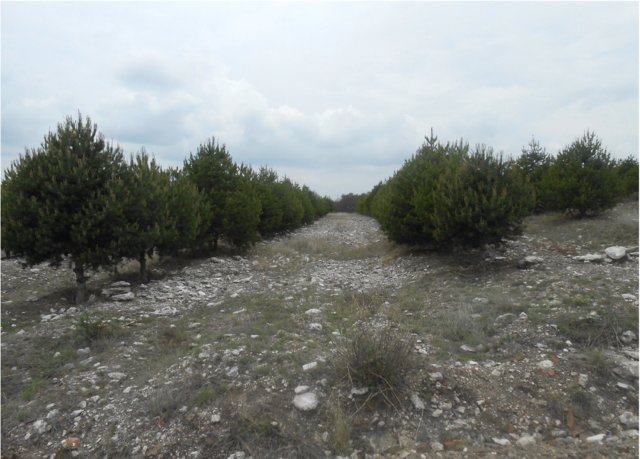
Callejones de piñón con forrajes intercalados [ប្រទេសម៉ិកស៊ិក]
La tecnología consiste en un sistema agrosilvopastoril con árboles de Pinus cembroides (pino piñonero) alineados een bordos ─en un terreno con suelos calizos previamente subsoleado─ conformando melgas (callejones) para con cultivos anuales para grano y forraje, con pastoreo libre eventual por períodos muy breves.
- អ្នកចងក្រង៖ BENJAMIN SANCHEZ BERNAL
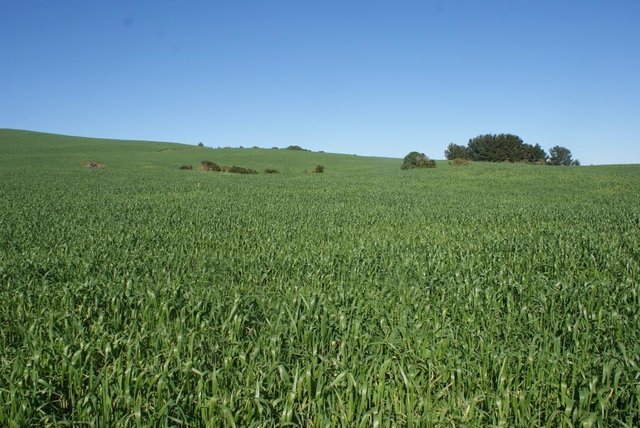
No tillage preceded by subsoiling [ប្រទេសស៊ីលី]
No tillage preceded by subsoiling consists in the use of a subsoiler at a 50 cm depth every 5 years before performing no tillage agriculture.
- អ្នកចងក្រង៖ Carlos Ovalle
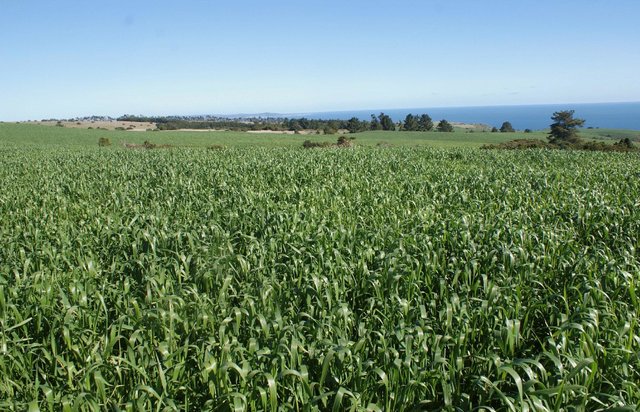
Crop rotation with legumes [ប្រទេសស៊ីលី]
Biological Nitrogen Fixation (BNF) of legumes as a source of N in crop rotations with cereals in Mediterranean Chile
- អ្នកចងក្រង៖ Carlos Ovalle
2. ការពណ៌នាអំពីវិធីសាស្ត្រផ្សព្វផ្សាយ SLM
2.1 ពណ៌នាសង្ខេបខ្លីពីវិធីសាស្ត្រផ្សព្វផ្សាយ
Dissemination of no tillage with subsoiling in the Municipality of Yumbel
2.2 ពណ៌នាលម្អិតពិវិធីសាស្ត្រផ្សព្វផ្សាយ
ពណ៌នាលម្អិតពិវិធីសាស្ត្រផ្សព្វផ្សាយ:
Aims / objectives: The Commune of Yumbel is a rural territory in the secano interior of central-south Chile, which has historically been an area of cereal crops and pulses. This has represented for many years the mainstay of the economy of small and medium farmers in the area. Owing to the sharp deterioration in the quality of the soil, caused by years of cultivation without respect for conservation, production potential was quickly fading and plunging farmers into an economic and social crisis caused by low yields and low income from agriculture. However, despite degradation, the commune still has abundant natural resources of soil and water, which will not be used by the forestry industry, and which can be recovered for productive and profitable agriculture. In May 2009, the team of researchers from INIA Quilamapu started this initiative based on promising results obtained in the EU DESIRE project for zero tillage, subsoiling and new crop rotations. The initiative was oriented towards transferring the technologies developed in DESIRE. The project received financial support from the Municipality of Yumbel.
The aim was to revitalise agriculture in the district of Yumbel, improve traditional crops using a conservation approach, which enables small- and medium-scale farmers to improve their incomes, create jobs and improve their quality of life.
Specific objectives:
• To develop new farming systems based on the application of soil conservation practices (no tillage and subsoiling) that prevent erosion, and allow the development of a more sustainable and economic agriculture.
• To improve crop rotations, introduce grain and pasture legumes to diversify production and use of nitrogen inputs for lower nitrogen fertilizer costs.
• To build-up again the production of grain legumes and cereals in the district of Yumbel
• To renew the genetic material of crop species and varieties currently available to farmers in the area, allowing access to improved varieties of higher yield potential and resistance to diseases.
Methods: We used a participatory approach, incorporating small producers in the extension programme from the beginning. Three representative areas were selected. Leader farmers were chosen in each sector who were responsible for field work. No tillage machinery was provided by INIA and acquired by a local farmer. The project directly involved 50 farmers and 250 ha of land. Further 400 farmers are being benefited by training on technologies of soil conservation and crop rotations and management.
Role of stakeholders: Municiplity of Yumbel: financing the project of technology transfer INIA and DESIRE project: human and material resources (machinery, transportation researchers, etc.). Ministry of Agriculture (INDAP, Institute of Agricultural Development): financing of management plans for soil conservation.
Technology transfer companies: technical assistance directly to the small farmers
Farmers: conducting field work and incorporating new technologies.
2.3 រូបភាពនៃវិធីសាស្ត្រផ្សព្វផ្សាយ
2.5 ប្រទេស/តំបន់/ទីតាំងកន្លែង ដែលវិធីសាស្ត្រផ្សព្វផ្សាយត្រូវបានអនុវត្តន៍
ប្រទេស:
ប្រទេសស៊ីលី
តំបន់/រដ្ឋ/ខេត្ត:
Bíobio and Maule region
បញ្ជាក់បន្ថែមពីលក្ខណៈនៃទីតាំង:
Cauquenes, Chile
Map
×2.6 កាលបរិច្ឆេទនៃការចាប់ផ្តើម និងបញ្ចប់នៃវិធីសាស្រ្តផ្សព្វផ្សាយនេះ
សូមបញ្ជាក់ឆ្នាំដែលបានបង្កើតឡើង:
2007
ឆ្នាំបញ្ចប់ (ប្រសិនបើវិធីសាស្ត្រផ្សព្វផ្សាយត្រូវបានឈប់ប្រើប្រាស់):
2011
2.7 ប្រភេទនៃវិធីសាស្ត្រផ្សព្វផ្សាយ
- ផ្អែកលើគម្រោង/កម្មវិធី
2.8 គោលបំណង/ទិសដៅសំខាន់នៃវិធីសាស្ត្រផ្សព្វផ្សាយ
The Approach focused on SLM only
To revitalising agriculture in the district of Yumbel, improve traditional crops with a conservation approach, which enables small- and medium-scale farmers to improve their incomes, to create jobs and to improve their quality of life.
The SLM Approach addressed the following problems: 1. Lack of machinery in the area 2. Few service providers 3. Lack of technical knowledge 4. Lack of cash to invest in SLM
5. Failure to implement a subsidy programme for farmers so that they can be organized around the creation of small company of service providers of machinery for subsoiling and no-tillage sowing.
2.9 លក្ខខណ្ឌអនុញ្ញាត ឬរារាំងការអនុវត្តន៍បច្ចេកទេសដែលស្ថិតនៅក្រោមវិធីសាស្រ្តផ្សព្វផ្សាយ
សង្គម/វប្បធម៌/ និងតម្លៃនៃសាសនា
- រារាំង
The traditional farming system. Farmers have used the mouldboard plough as the primary tillage implement.
Treatment through the SLM Approach: Showing in farm days, the excellent results obtained in the experimental sites with no tillage and new crop rotation.
ភាពអាចរកបាននៃធនធានហិរញ្ញវត្ថុ និងសេវាកម្ម
- រារាំង
Lack of capital and financial resources of the farmers.
Treatment through the SLM Approach: State instruments and aids to implement soil conservation plans in the fields of the producers.
បរិបទនៃស្ថាប័ន
- រារាំង
Absence or lack of coordination between institutions responsible for rural development.
Treatment through the SLM Approach: Implementation of a participatory rural development project for soil conservation and improvement of agriculture, inspired by the methodologies and experience of the project.
ចំណេះដឹងស្តីពី SLM និងការទទួលបានការគាំទ្រផ្នែកបច្ចេកទេស
- រារាំង
Lack of knowledge on sustainable farming practices.
Treatment through the SLM Approach: Implementation of a soil conservation programme under the real conditions of the farmers with an environmental and economic sustainability approach.
3. ការចូលរួម និងតួនាទីរបស់ភាគីពាក់ព័ន្ធ
3.1 អ្នកពាក់ព័ន្ធដែលបានចូលរួមក្នុងវិធីសាស្ត្រផ្សព្វផ្សាយ និងតួនាទីរបស់ពួកគេ
- អ្នកប្រើប្រាស់ដីក្នុងតំបន់/សហគមន៍
Men are more involved in tillage activities. Men perform hard labour job in the land, while women participate in household tasks.
- អ្នកឯកទេសគ្រប់គ្រងដីប្រកបដោយចីរភាព/ទីប្រឹក្សាបច្ចេកទេសកសិកម្ម
INIA
- គ្រូបង្រៀន/សិស្សក្មេងៗ/សិស្ស-និស្សិត
Universidad de Concepción, Universidad de Talca
- រដ្ឋាភិបាលថ្នាក់ជាតិ (អ្នករៀបចំផែនការ អ្នកសម្រេចចិត្ត)
INIA, SAG
- អង្គការអន្តរជាតិ
3.2 ការចូលរួមរបស់អ្នកប្រើប្រាស់ដីក្នុងតំបន់/ សហគមន៍ក្នុងតំបន់ក្នុងដំណាក់កាលផ្សេងគ្នានៃវិធីសាស្រ្តផ្សព្វផ្សាយ
| ការចូលរួមរបស់អ្នកប្រើប្រាស់ដីក្នុងតំបន់/សហគមន៍ក្នុងតំបន់ | សូមបញ្ជាក់នរណាត្រូវបានចូលរួម ព្រមទាំងពណ៌នាសកម្មភាពទាំងនោះ | |
|---|---|---|
| ការចាប់ផ្តើម/ការលើកទឹកចិត្ត | គំនិតផ្តួចផ្តើមដោយខ្ឡួនឯង | The producers themselves and the municipality of Yumbel demanded the project implementation given the severe problems of rural poverty and the soil degradation |
| ការរៀបចំផែនការ | អន្តរកម្ម | The technologies are being applied and implementation has been made through interaction with farmers, municipalities, INIA and INDAP |
| ការអនុវត្តន៍ | អន្តរកម្ម | The farmers implemented the conservation practice in their lands. |
| ការត្រួតពិនិត្យ និងវាយតម្លៃ | អន្តរកម្ម | Researchers evaluated this results |
| Research | អន្តរកម្ម |
3.4 ការសម្រេចចិត្តលើការជ្រើសរើសបច្ចេកទេស SLM
សូមបញ្ជាក់តើអ្នកណាជាអ្នកបានសម្រេចចិត្តក្នុងការជ្រើសរើសបច្ចេកទេសដើម្បីយកមកអនុវត្តន៍:
- អ្នកជំនាញឯកទេស SLM បន្ទាប់ពីបានប្រឹក្សាយោបល់ជាមួយអ្នកប្រើប្រាស់ដី
ចូរពន្យល់:
Decisions on the method of implementing the SLM Technology were made by mainly by SLM specialists with consultation of land users
4. ជំនួយបច្ចេកទេស ការកសាងសមត្ថភាព និងការគ្រប់គ្រងចំណេះដឹង
4.1 ការកសាងសមត្ថភាព/ បណ្តុះបណ្តាល
តើវគ្គបណ្តុះបណ្តាលបានផ្តល់ឱ្យអ្នកប្រើប្រាស់ដី/អ្នកពាក់ព័ន្ធផ្សេងៗទៀតដែរឬទេ?
បាទ/ចា៎
សូមបញ្ជាក់តើអ្នកណាត្រូវបានបណ្តុះបណ្តាល:
- អ្នកប្រើប្រាស់ដី
- បុគ្គលិកចុះទីវាល/អ្នកផ្តល់ប្រឹក្សាយោបល់
ទម្រង់នៃការបណ្តុះបណ្តាល:
- អនុវត្តន៍ជាមួយការងារ
- ពីកសិករទីកសិករ
- ទីតាំងបង្ហាញ
- ការប្រជុំជាសាធារណៈ
- វគ្គបណ្តុះបណ្តាល
4.2 សេវាផ្តល់ប្រឹក្សាយោបល់
តើអ្នកប្រើប្រាស់ដីបានទទួលនូវសេវាផ្តល់ប្រឹក្សាដែរ ឬទេ?
បាទ/ចា៎
ពណ៌នា/ពន្យល់:
Advisory service is very adequate to ensure the continuation of land conservation activities
4.3 ការពង្រឹងសមត្ថភាពស្ថាប័ន (ការអភិរឌ្ឍន៍អង្គភាព)
តើស្ថាប័នទាំងអស់ត្រូវបានបង្កើតឡើង ឬពង្រឹងសមត្ថភាពតាមរយៈវិធីសាស្ត្រផ្សព្វផ្សាយដែរ ឬទេ?
- បាទ/ច៎ា ជាមធ្យម
សូមបញ្ជាក់ថាតើស្ថាប័នត្រូវបានពង្រឹង ឬបង្កើតឡើងនៅត្រឹមកម្រិតណា(ច្រើន)?
- ថ្នាក់មូលដ្ឋាន
សូមផ្តល់ព័ត៌មានបន្ថែមទៀតឱ្យបានលម្អិត:
The Yumbel project has had permanent participation of INIA (project DESIRE) and INDAP.
4.4 ការត្រួតពិនិត្យ និងវាយតម្លៃ
តើការត្រួតពិនិត្យ និងវាយតម្លៃគឺជាផ្នែកមួយនៃវិធីសាស្ត្រដែរឬទេ?
បាទ/ចា៎
មតិយោបល់:
bio-physical aspects were monitored by project staff through measurements; indicators: Soil fertility (soil nutrient content N, P, K, S), erosion (soil loss, loss of nutrients), quality of soil (compaction, bulk density, structure, aggregate stability)
economic / production aspects were monitored by project staff through observations; indicators: Crop production (yield, quality), gross margin, profitability
There were no changes in the Approach as a result of monitoring and evaluation
There were no changes in the Technology as a result of monitoring and evaluation
4.5 ការស្រាវជ្រាវ
តើការស្រាវជ្រាវ គឺជាផ្នែកមួយនៃវិធីសាស្រ្តដែរឬទេ?
បាទ/ចា៎
បញ្ជាក់ប្រធានបទ:
- បច្ចេកវិទ្យា
សូមផ្តល់ព័ត៌មានបន្ថែមទៀតឱ្យបានលម្អិត និងចង្អុលបង្ហាញនរណាដែលបានធ្វើការស្រាវជ្រាវ:
There are three experimental sites with evaluations to determine the best choice of conservation tillage systems and crop rotations. Different conservation tillage systems were evaluated and compared to conventional tillage. On these experimental sites, several indicators (chemical, physical and biological) were evaluated.
Research was carried out both on station and on-farm
5. ថវិកា និងសម្ភារៈឧបត្ថម្ភពីខាងក្រៅ
5.1 ថវិកាប្រចាំឆ្នាំសម្រាប់ផ្សព្វផ្សាយ SLM
ប្រសិនបើចំនួនពិតប្រាកដនៃថវិកាប្រចាំឆ្នាំមិនត្រូវបានដឹងច្បាស់ សូមប្រាប់ពីចន្លោះនៃថវិកានោះ:
- 10,000-100,000
មតិយោបល់ (ឧ. ប្រភពសំខាន់នៃមូលនិធិ/ម្ចាស់ជំនួយចំបង):
Approach costs were met by the following donors: international: 30.0%; government: 70.0%
5.2 ការគាំទ្រផ្នែកហិរញ្ញវត្ថុ / សម្ភារៈដែលបានផ្តល់ទៅឱ្យអ្នកប្រើប្រាស់ដី
តើអ្នកប្រើប្រាស់ដីបានទទួលការគាំទ្រផ្នែកហិរញ្ញវត្ថ/សម្ភារៈសម្រាប់ការអនុវត្តន៍បច្ចេកទេសដែរឬទេ:
បាទ/ចា៎
ប្រសិនបាទ/ច៎ា សូមបញ្ជាក់ប្រភេទ(ច្រើន)នៃការគាំទ្រ លក្ខខណ្ឌ និងអ្នកផ្តល់ឱ្យ(ច្រើន):
INDAP (Institute of Agricultural Development)
5.3 សូមបញ្ជាក់ពីធាតុចូលត្រូវបានផ្តល់បដិភាគ (រួមទាំងកម្លាំងពលកម្ម)
ប្រសិនបើកម្លាំងពលកម្មធ្វើដោយអ្នកប្រើប្រាស់ដី តើវាជាធាតុចូលដ៏សំខាន់មួយដែរ ឬទេ:
- ដោយស្ម័គ្រចិត្ត
មតិយោបល់:
Between INIA and Municipality of Yumbel a participative project wiht the local farmers was realized, to realize conservation tillage system.
The funding for the implementation of new technologies are 50% from the state (programme of recovery of degraded soils of the Government of Chile for soil conservation practices) and 50% of the producers themselves (materials, labour, etc.).
5.4 ឥណទាន
តើឥណទានដែលបានផ្តល់នៅក្រោមវិធីសាស្ត្រផ្សព្វផ្សាយសម្រាប់សកម្មភាព SLM នេះយ៉ាងដូចម្តេច?
បាទ/ចា៎
សូមបញ្ជាក់លក្ខខណ្ឌ (អាត្រាការប្រាក់ ការសង ។ល។):
repayment conditions: The funding for the implementation of new technologies are 50% from the state (programme of recovery of degraded soils of the Government of Chile for soil conservation practices) and 50% of the producers themselves (materials, labour, etc.).
6. ការវិភាគរកផលប៉ះពាល់ និងសេចក្តីសន្និដ្ឋាន
6.1 ផលប៉ះពាល់នៃវិធីសាស្ត្រផ្សព្វផ្សាយ
តើវិធីសាស្ត្រផ្សព្វផ្សាយជួយអ្នកប្រើប្រាស់ដីដើម្បីអនុវត្តន៍ និងថែទាំបច្ចេកទេស SLM?
- ទេ
- បាទ/ច៎ា បន្តិចបន្តួច
- បាទ/ច៎ា ជាមធ្យម
- បាទ/ច៎ា បានខ្លាំង
Mitigation of water erosion effects and better yields.
តើវិធីសាស្ត្រផ្សព្វផ្សាយនេះផ្តល់សិទ្ធិអំណាចដល់សង្គមនិងសេដ្ឋកិច្ចដែលក្រុមមិនទទួលបានផលប្រយោជន៍?
- ទេ
- បាទ/ច៎ា បន្តិចបន្តួច
- បាទ/ច៎ា ជាមធ្យម
- បាទ/ច៎ា បានខ្លាំង
This programme targets small farmers of the commune, who have no access to the technology or to State aid. The results are highly promising regarding the incorporation to the development of this sector.
Did other land users / projects adopt the Approach?
- ទេ
- បាទ/ច៎ា បន្តិចបន្តួច
- បាទ/ច៎ា ជាមធ្យម
- បាទ/ច៎ា បានខ្លាំង
Because of the great results obtained by few farmers, the approach is being adopted by others.
Did the Approach lead to improved livelihoods / human well-being?
- ទេ
- បាទ/ច៎ា បន្តិចបន្តួច
- បាទ/ច៎ា ជាមធ្យម
- បាទ/ច៎ា បានខ្លាំង
Farmers that perform conservation obtained better yields, less work on the sowing and more time to attend to other activities on the land.
Did the Approach help to alleviate poverty?
- ទេ
- បាទ/ច៎ា បន្តិចបន្តួច
- បាទ/ច៎ា ជាមធ្យម
- បាទ/ច៎ា បានខ្លាំង
The improvement in yields and profitability of crops, the diversification of the production and the mitigation of land degradation are the strategies that are being implemented to alleviate poverty.
6.2 ការលើកទឹកចិត្តចម្បងៗរបស់អ្នកប្រើប្រាស់ដីសម្រាប់ការអនុវត្តបច្ចេកទេស SLM
- បង្កើនផលិតកម្ម
- បង្កើនប្រាក់ចំណេញ (សមត្ថភាព) បង្កើនអត្រាចំណេញ
- កាត់បន្ថយទំហំការងារ
- ការចំណាយ/បដិភាគ
- ច្បាប់ និងបទបញ្ជា (ផាកពិន័យ)/ការប្រតិបត្តិ
- កិត្តិនាម សម្ពាធសង្គម/ការផ្សាភ្ជាប់ទៅនឹងសង្គម
- ការផ្សារភ្ជាប់ទៅនឹងចលនា/គម្រោង/ក្រុម/បណ្តាញ
- ការកែលម្អសោភ័ណ្ឌភាព
6.3 សកម្មភាពផ្សព្វផ្សាយដែលប្រកបដោយចីរភាព
តើអ្នកប្រើប្រាស់ដីអាចធ្វើឱ្យមានចីរភាពនូវអ្វីដែលត្រូវបានអនុវត្តន៍តាមរយៈវិធីសាស្ត្រផ្សព្វផ្សាយដែរឬទេ(ដោយពុំមានការគាំទ្រពីអ្នកខាងក្រៅ)?
- មិនប្រាកដ
6.4 ភាពខ្លាំង/ គុណសម្បត្តិនៃវិធីសាស្ត្រផ្សព្វផ្សាយ
| ភាពខ្លាំង/ គុណសម្បត្តិ/ ឱកាស ទស្សនៈរបស់បុគ្គលសំខាន់ៗ |
|---|
| Assistance programmes from the State oriented towards tackling soil degradation. (How to sustain/ enhance this strength: This project has been sustained over time and will remain at least for 3 to 4 years.) |
| High rural population in this commune, involvement of young farmers (under 40 years) |
| A strong commitment from the local authorities with the project. |
| Great interest of farmers to improve their incomes and conditions of life. |
6.5 ភាពខ្សោយ/ គុណវិបត្តិនៃវិធីសាស្ត្រ និងរកដំណោះស្រាយ
| ភាពខ្សោយ/ គុណវិបត្តិ/ ហានិភ័យក្នុងទស្សនៈរបស់បុគ្គលសំខាន់ៗ | តើបច្ចេកទេសទាំងនោះបានដោះស្រាយបញ្ហាដូចម្តេច? |
|---|---|
| Lack of no-tillage machinery | Organization of associative farmers enterprises for the purchase of machinery and agricultural implements. |
| Insufficient training on soil conservation for the farmers or for technical assistance companies. | Training, field days, demonstrative sowings, explanatory publications, practical work with farmers and technicians. |
| Delay in allocation of resources of the instruments of the state. | Synchronizing the availability of resources with the needs of the farmers for the execution of the work (supply purchases, rental equipment, etc.) |
7. ឯកសារយោង និងវេបសាយ
7.1 វិធីសាស្ត្រ/ ប្រភពនៃព័ត៌មាន
- តាមការចុះទីវាល ការស្រាវជ្រាវនៅទីវាល
- ការសម្ភាសន៍ជាមួយអ្នកប្រើប្រាស់ដី
7.3 ចូលទៅទាញយកឯកសារពាក់ព័ន្ធដែលមានលើបណ្តាញអ៊ិនធឺណែត
ចំណងជើង/ ពណ៌នា:
DESIRE site information
វេបសាយ:
www.desire-his.eu/en/secano-interior-chile
ការតភ្ជាប់ និងម៉ូឌុល
ពង្រីកមើលទាំងអស់ បង្រួមទាំងអស់ការតភ្ជាប់

Callejones de piñón con forrajes intercalados [ប្រទេសម៉ិកស៊ិក]
La tecnología consiste en un sistema agrosilvopastoril con árboles de Pinus cembroides (pino piñonero) alineados een bordos ─en un terreno con suelos calizos previamente subsoleado─ conformando melgas (callejones) para con cultivos anuales para grano y forraje, con pastoreo libre eventual por períodos muy breves.
- អ្នកចងក្រង៖ BENJAMIN SANCHEZ BERNAL

No tillage preceded by subsoiling [ប្រទេសស៊ីលី]
No tillage preceded by subsoiling consists in the use of a subsoiler at a 50 cm depth every 5 years before performing no tillage agriculture.
- អ្នកចងក្រង៖ Carlos Ovalle

Crop rotation with legumes [ប្រទេសស៊ីលី]
Biological Nitrogen Fixation (BNF) of legumes as a source of N in crop rotations with cereals in Mediterranean Chile
- អ្នកចងក្រង៖ Carlos Ovalle
ម៉ូឌុល
គ្មានម៉ូឌុល


